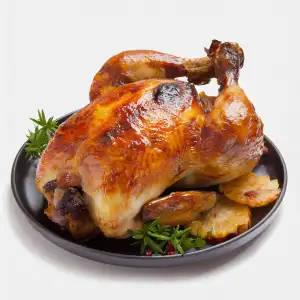Dumplings: A Delightful Culinary Adventure for Food Lovers

- History and Cultural Significance of Dumplings
- Popular Types of Dumplings Around the World
- Ingredients and Preparation of Dumplings
- Cooking Techniques for Dumplings
- Serving and Pairing Dumplings with Dips and Sauces
- Health Benefits of Dumplings
- Variations and Innovations in Dumpling Recipes
- Tips and Tricks for Making Perfect Dumplings
Dumplings are a beloved culinary delight that has captured the hearts and taste buds of food lovers around the world. These small parcels of dough, filled with various ingredients, offer a burst of flavor in every bite. From savory to sweet, dumplings come in a wide array of shapes, sizes, and flavors, making them a versatile and exciting dish.
Dating back centuries, dumplings have been a staple in many cultures and cuisines. Whether steamed, boiled, or fried, they have become an integral part of traditional meals and festive celebrations. The art of making dumplings has been passed down through generations, preserving their rich history and cultural significance.
Join us on a flavorful journey as we explore the fascinating world of dumplings. From Asia to Europe to the Americas, we will discover the unique types of dumplings enjoyed across different regions. We will delve into the ingredients and preparation methods that give each dumpling its distinct taste and texture.
Furthermore, we will uncover the cooking techniques used to achieve perfectly cooked dumplings – from mastering the art of steaming to achieving golden-brown crispness through frying. We will also explore the various dips and sauces that complement these delectable treats.
But it's not just about indulgence; there are health benefits associated with consuming dumplings too. Packed with nutritious ingredients such as vegetables, meats, and seafood, they offer a balanced meal option for those seeking both taste and nourishment.
As we dive deeper into this delightful culinary adventure, we will also discover how chefs around the world have innovated upon traditional recipes to create exciting variations. From fusion flavors to unique fillings and presentation styles – there is no limit to the creative possibilities when it comes to dumplings.
Whether you're an experienced cook or new to the kitchen, we'll provide you with tips and tricks for making perfect dumplings every time. With our guidance, you'll be able to impress your friends and family with your own homemade dumplings.
So, grab your apron and get ready to embark on a mouthwatering journey through the world of dumplings. From their humble beginnings to their present-day popularity, dumplings are sure to captivate your senses and leave you craving for more.
History and Cultural Significance of Dumplings
Dumplings have a rich history and hold cultural significance in many countries around the world. The origins of dumplings can be traced back to ancient China, where they were initially made as an offering to the gods during religious ceremonies. Over time, dumplings became a staple food in Chinese cuisine and spread to neighboring countries like Japan, Korea, and Vietnam.
In Chinese culture, dumplings are traditionally eaten during the Lunar New Year as a symbol of good luck and prosperity. The shape of the dumpling is said to resemble ancient Chinese currency, representing wealth and fortune. In addition to their symbolic meaning, dumplings also bring families together during festive occasions as they are often prepared and enjoyed collectively.
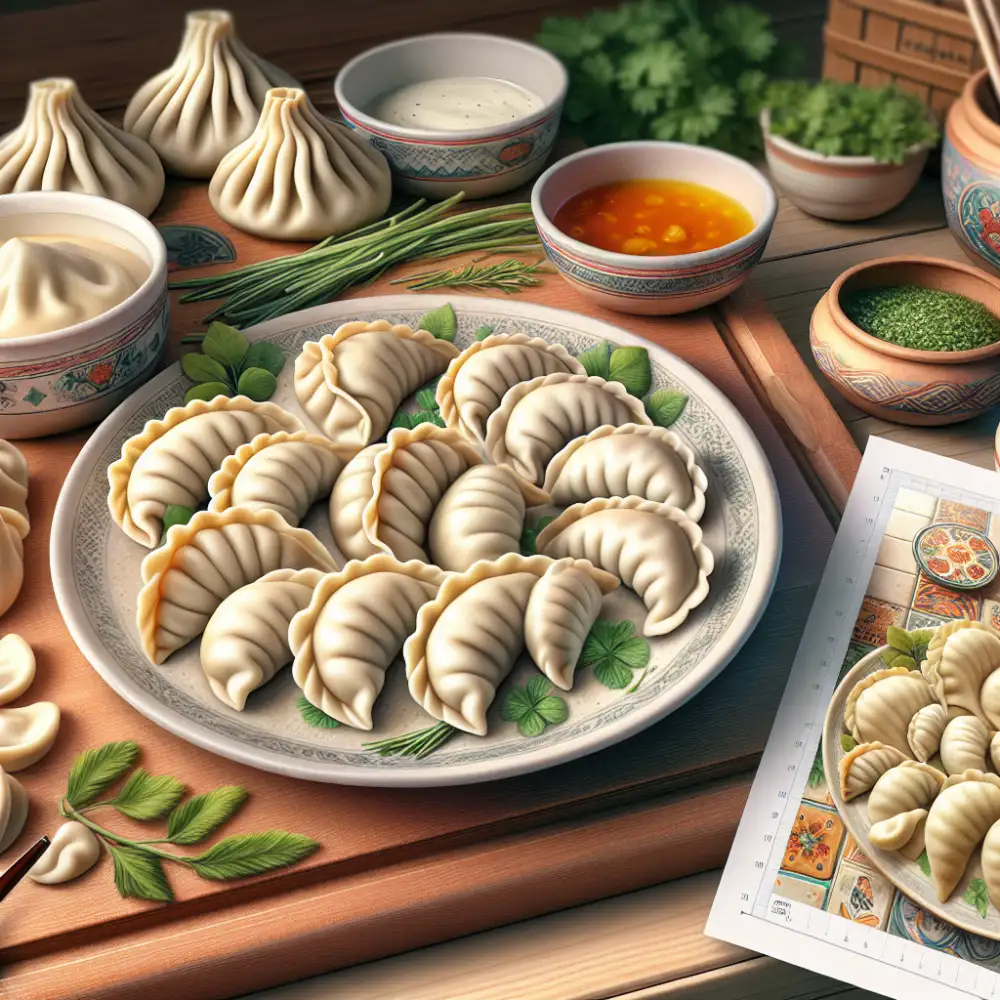
Similarly, in Japanese cuisine, dumplings known as gyoza have become immensely popular. Introduced by Chinese immigrants in the early 20th century, gyoza are now considered a quintessential part of Japanese street food culture. They are typically filled with ground meat or vegetables and pan-fried until crispy on one side.
Korean cuisine boasts its own unique style of dumplings called mandu. These savory treats are often filled with minced meat, tofu, or vegetables and can be steamed, boiled or pan-fried. Mandu holds cultural significance in Korean society and is commonly served during traditional holidays such as Lunar New Year's Day (Seollal) and Harvest Moon Festival (Chuseok).
In Eastern Europe, pierogi is a beloved type of dumpling that has been enjoyed for centuries. These small pockets of dough are usually stuffed with ingredients like potatoes, cheese, sauerkraut or fruit fillings. Pierogi holds cultural significance in countries like Poland and Ukraine where they are often served on special occasions such as Christmas Eve dinner.
The cultural significance of dumplings extends beyond Asia and Eastern Europe. In Latin American cuisine, empanadas are a popular type of stuffed pastry that resembles a folded dumpling. Empanadas are enjoyed in various countries including Argentina, Mexico, and Colombia, each with their own unique fillings and flavors.
The history and cultural significance of dumplings highlight their universal appeal and the way they have evolved to become an integral part of different culinary traditions. Whether steamed, boiled, pan-fried or baked, dumplings continue to captivate food lovers around the world with their delicious flavors and cultural heritage.
Popular Types of Dumplings Around the World
Dumplings are a beloved culinary delight found in various cultures around the world. Each region has its own unique take on this versatile dish, making it a truly global favorite. Here are some popular types of dumplings enjoyed across different countries:
- Chinese Dumplings: Known as jiaozi, these dumplings are typically filled with minced meat (pork, beef, or chicken), vegetables, and seasonings. They can be boiled, steamed, or pan-fried and are often served during Chinese New Year celebrations.
- Japanese Gyoza: These dumplings have a thin wrapper filled with ground pork, cabbage, garlic, and ginger. They are usually pan-fried until crispy on one side and served with a tangy dipping sauce.
- Italian Ravioli: These pasta-based dumplings consist of a filling encased in thin pasta dough. The fillings vary from ricotta cheese and spinach to meat or seafood. Ravioli is typically served with a variety of sauces like marinara or Alfredo.
- Polish Pierogi: These dumplings are made from unleavened dough filled with various ingredients such as potatoes, cheese, sauerkraut, mushrooms, or fruit preserves. Pierogi can be boiled or fried and are often served with sour cream.
- Indian Samosas: These deep-fried dumplings have a crispy pastry shell filled with spiced potatoes, peas, onions, and sometimes meat or lentils. Samosas are commonly enjoyed as appetizers or snacks in India.
- Korean Mandu: Similar to Chinese jiaozi, mandu is filled with ground meat (pork or beef), tofu, vegetables like cabbage or green onions, and seasonings such as soy sauce and sesame oil. They can be steamed, boiled or pan-fried.
- Turkish Manti: These small dumplings are typically filled with ground lamb or beef, onions, and spices. They are boiled and served with melted butter, yogurt, and a tomato-based sauce.
These are just a few examples of the diverse range of dumplings found worldwide. Each type offers a unique flavor profile and culinary experience that reflects the cultural heritage of its origin. Exploring the different types of dumplings is like embarking on a flavorful journey around the globe.

Ingredients and Preparation of Dumplings
Dumplings, a beloved culinary delight, can be made using a variety of ingredients. The basic components include flour, water, and sometimes salt. However, depending on the type of dumpling being prepared, additional ingredients such as eggs, milk, or oil may be added to enhance the flavor and texture.
The process of making dumplings typically involves mixing the ingredients together to form a dough. The dough is then kneaded until it becomes smooth and elastic. It is important to achieve the right consistency to ensure that the dumplings hold their shape during cooking.
Once the dough is ready, it is rolled out into thin sheets or formed into small balls. These can be filled with various fillings such as meat, vegetables, seafood, or even sweet fillings like fruits or chocolate. The filling adds an extra layer of flavor and texture to the dumplings.
To assemble the dumplings, a small amount of filling is placed in the center of each dough piece. The edges are then sealed by folding or crimping them together. This ensures that the filling remains intact while cooking.
Different cultures have their own unique ways of shaping dumplings. For instance, Chinese jiaozi are often folded into crescent shapes or pleated into intricate patterns. Japanese gyoza are typically folded in half and sealed with a crimped edge.
Once assembled, dumplings can be cooked in various ways including boiling, steaming, frying, or baking. Boiling is a common method where the dumplings are gently simmered in hot water until they float to the surface and become tender.
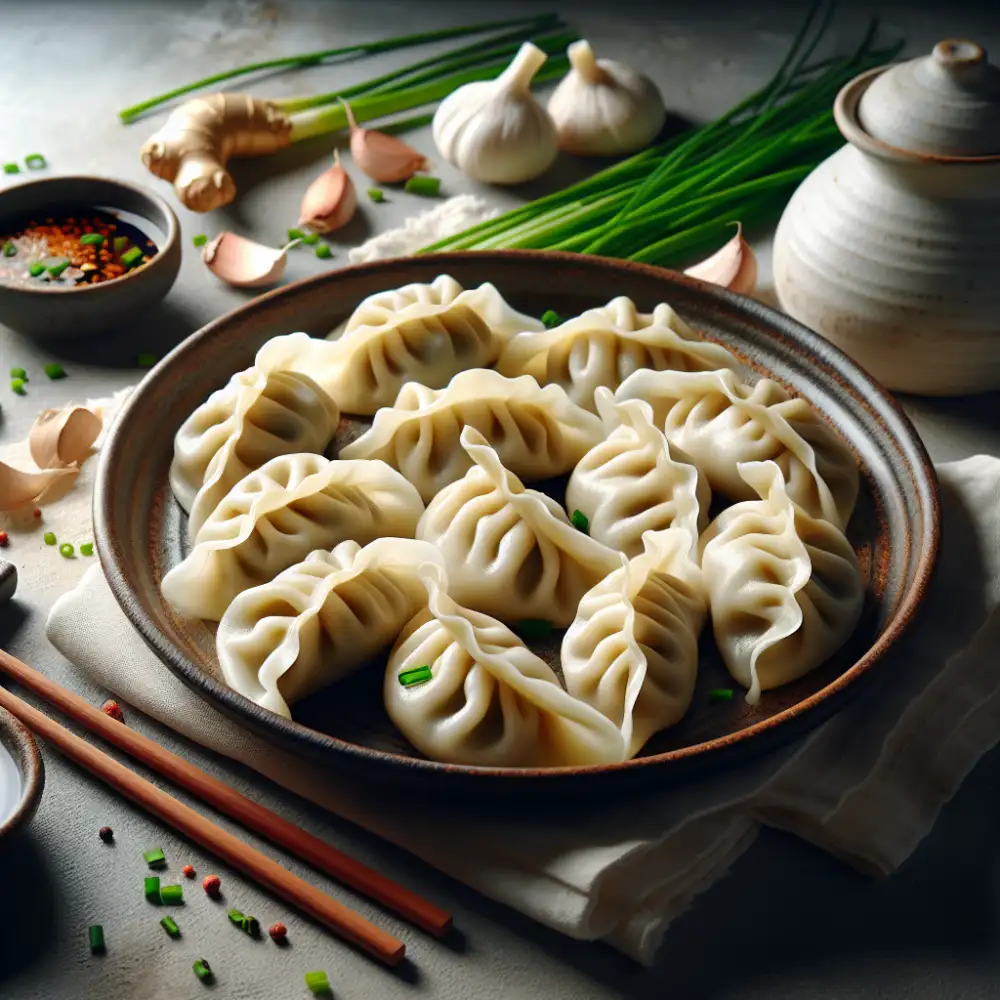

Steaming involves placing the dumplings in a steamer basket over boiling water for a moist and soft texture. Frying creates a crispy exterior while maintaining a juicy filling. Baking gives dumplings a golden brown crust with a soft interior.
The cooking time for dumplings varies depending on their size and cooking method. It is important to follow the recipe instructions or adjust the cooking time accordingly to ensure that the dumplings are cooked through and safe to eat.
In conclusion, the ingredients and preparation of dumplings may vary depending on the type of dumpling being made. The dough is typically made with flour, water, and sometimes additional ingredients. Fillings can range from savory to sweet, adding depth of flavor. Dumplings can be shaped in various ways and cooked through boiling, steaming, frying, or baking. Mastering the art of making dumplings opens up a world of culinary possibilities for food lovers everywhere.
Cooking Techniques for Dumplings
Dumplings are a versatile dish that can be cooked using various techniques, each imparting its own unique flavor and texture. The most common cooking methods for dumplings include boiling, steaming, frying, and baking.
Boiling is the traditional method used to cook dumplings in many cultures. To boil dumplings, simply bring a pot of water to a boil and gently drop the dumplings into the water. Cook them until they float to the surface, which usually takes about 5-10 minutes depending on their size.
Steaming is another popular technique for cooking dumplings. This method involves placing the dumplings in a steamer basket or on a plate inside a steamer. Steam them over high heat for around 15-20 minutes until they become tender and translucent.
Frying dumplings creates a crispy exterior while keeping the filling moist and flavorful. To fry dumplings, heat oil in a pan over medium-high heat and place the dumplings in the pan. Cook them until they turn golden brown on one side, then flip them over to brown the other side. This method typically takes about 2-3 minutes per side.
Baking is an alternative cooking technique that results in a slightly different texture compared to other methods. Preheat your oven to 375°F (190°C), place the dumplings on a baking sheet lined with parchment paper, and bake them for approximately 20-25 minutes or until they are golden brown.
The choice of cooking technique depends on personal preference and the type of dumpling being prepared. Boiling is ideal for delicate wrappers like those used in Chinese jiaozi or Italian tortellini. Steaming works well for lighter fillings such as those found in Japanese gyoza or Vietnamese banh bot loc. Frying is perfect for creating crispy potstickers or Indian samosas. Baking is often used for larger stuffed dumplings like Russian pelmeni or Polish pierogi.
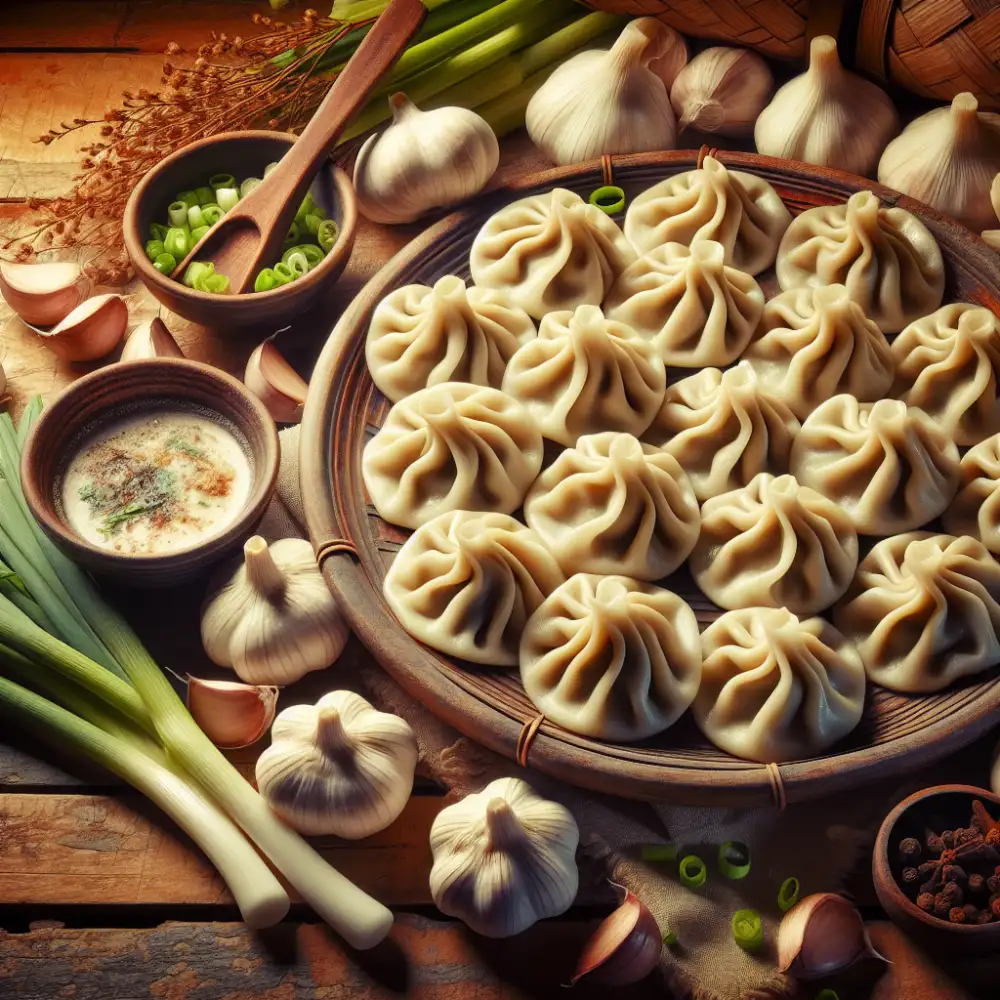
By mastering these cooking techniques, you can explore a world of flavors and textures that dumplings have to offer. Experiment with different methods to find your favorite way of preparing these delightful morsels.
Serving and Pairing Dumplings with Dips and Sauces
Dumplings, with their diverse fillings and flavors, can be enhanced even further by pairing them with delicious dips and sauces. These accompaniments not only add a burst of flavor but also complement the texture of the dumplings.
One popular dipping sauce for dumplings is soy sauce, which adds a savory and salty element to the dish. Soy sauce can be enjoyed on its own or mixed with other ingredients like vinegar, ginger, garlic, or chili oil to create a more complex flavor profile.
Another classic dip is sweet chili sauce, which provides a balance of sweetness and heat. This versatile condiment pairs well with various types of dumplings, adding a tangy kick to each bite.
For those who prefer a creamy option, peanut sauce is an excellent choice. Made from ground peanuts, this rich and nutty sauce adds depth to the dumpling's taste. It works particularly well with vegetable or chicken-filled dumplings.
In addition to these traditional options, there are countless regional variations of dips and sauces that beautifully complement specific types of dumplings. For example, in Japan, gyoza (Japanese dumplings) are often served with a mixture of soy sauce and rice vinegar called ponzu sauce. In Thailand, dumplings are commonly paired with nam jim dipping sauce made from lime juice, fish sauce, sugar, and chili.
When serving dumplings at home or in restaurants, it's essential to offer a variety of dipping sauces to cater to different tastes. This allows diners to customize their experience by mixing and matching flavors according to their preferences.
Pairing dumplings with the right dip or sauce can elevate the overall dining experience by adding layers of complexity and enhancing the flavors already present in the filling. So next time you enjoy some delicious dumplings, don't forget to explore the world of dips and sauces that await you!
Health Benefits of Dumplings
Dumplings, beyond being delicious, also offer several health benefits. Firstly, they are a good source of protein as they often contain meat or seafood fillings. Protein is essential for muscle growth and repair, and it helps to keep us feeling full for longer periods.
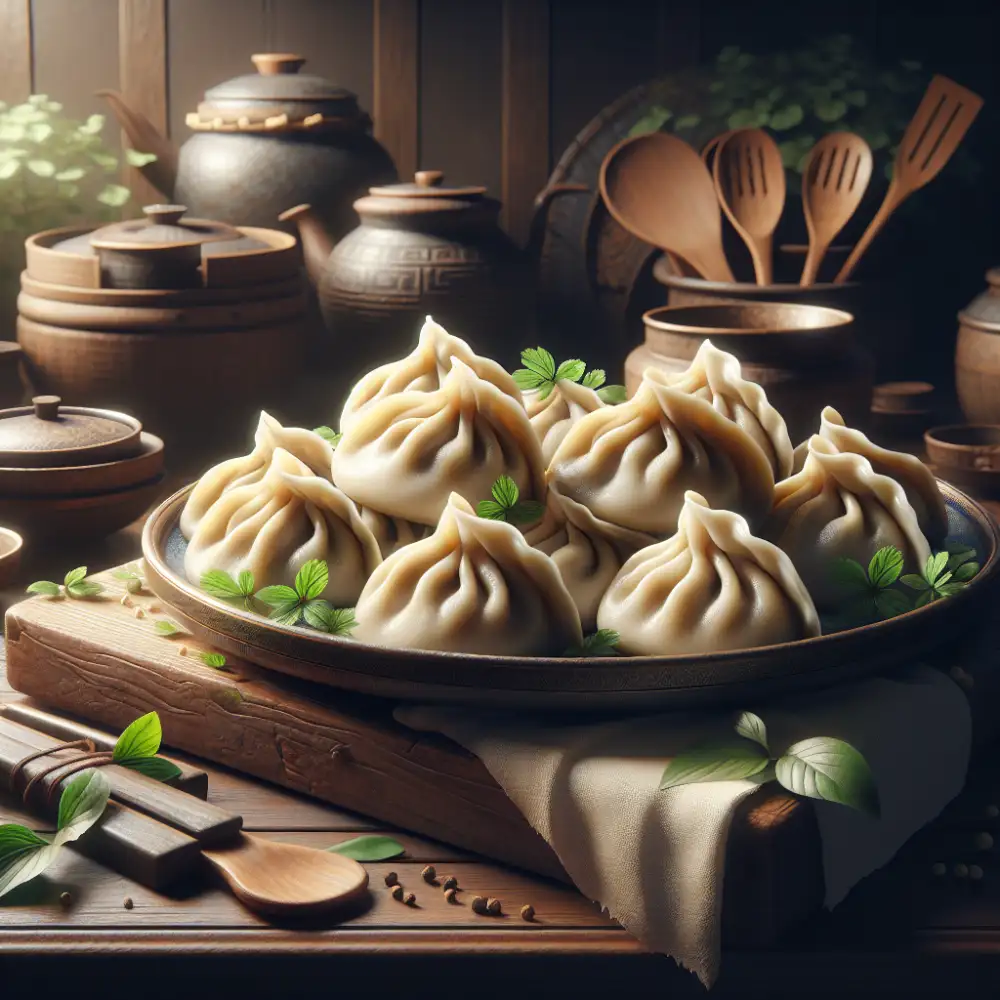
Additionally, dumplings can be packed with vegetables such as cabbage, carrots, and mushrooms. These ingredients provide essential vitamins, minerals, and fiber that support overall health and digestion.
Moreover, steamed or boiled dumplings are a healthier alternative to fried ones. By avoiding excessive oil and fat, we can reduce the calorie content while still enjoying the flavorsome experience of dumplings.
Furthermore, the cooking method used for dumplings helps retain most of the nutrients present in the ingredients. Steaming or boiling ensures that vitamins and minerals are preserved rather than being lost through high-heat cooking methods.
However, it's important to note that the nutritional value of dumplings can vary depending on the filling and wrapper used. Opting for lean meats or vegetarian fillings can further enhance their health benefits.
In moderation and as part of a balanced diet, dumplings can contribute to a nutritious meal that satisfies both our taste buds and our bodies' nutritional needs. So go ahead and indulge in these delightful treats while reaping their health benefits!
Variations and Innovations in Dumpling Recipes
Dumplings have been enjoyed for centuries, and their popularity has led to a wide array of variations and innovative recipes. From traditional fillings to unique combinations, there is a dumpling recipe to suit every palate.
In Chinese cuisine, the classic pork-filled dumplings known as jiaozi are a staple. However, there are countless variations available, such as shrimp and chive dumplings or vegetarian options filled with mushrooms and tofu. In recent years, fusion dumplings have also gained popularity, incorporating ingredients like truffles or cheese into the filling.
In Japan, gyoza is a popular type of dumpling that is typically filled with ground pork and cabbage. However, creative chefs have started experimenting with different fillings such as seafood or even dessert-inspired options like chocolate-filled gyoza.
Korean cuisine offers mandu, which can be steamed, boiled, or pan-fried. Traditional fillings include minced meat mixed with vegetables like kimchi or tofu. Modern twists on Korean dumplings include adding ingredients like sweet potato noodles or even kimchi fried rice as the filling.
In India, samosas are a beloved snack that can be found in various forms across the country. While the classic samosa is filled with spiced potatoes and peas, innovative versions now feature fillings like chicken tikka or paneer tikka for a unique twist on this traditional favorite.
Even in Western cuisines, dumplings have found their place. Italian cuisine boasts ravioli - pasta pockets filled with various ingredients such as cheese, spinach, or meat. And in Eastern Europe, pierogi are popular dumplings filled with savory ingredients like potatoes and cheese or sweet fillings like fruits.
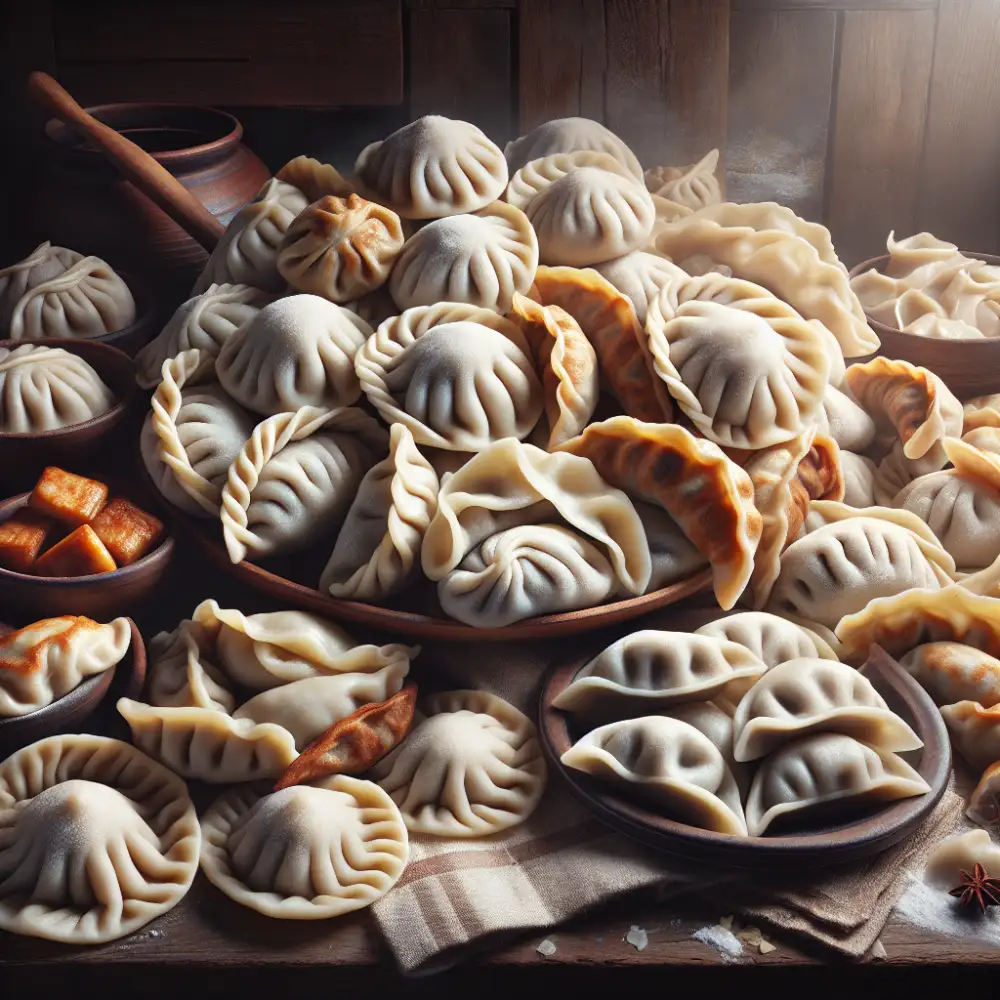

The world of dumplings continues to evolve as chefs experiment with new flavors and techniques. From fusion creations to inventive fillings inspired by global cuisines, there is no limit to the possibilities when it comes to dumpling recipes. So, whether you prefer traditional flavors or enjoy exploring new culinary horizons, there is a dumpling waiting to delight your taste buds.
| Feature | Chinese Potstickers | Italian Ravioli | Polish Pierogi |
|---|---|---|---|
| Typical Filling | Pork, cabbage, ginger | Cheese, spinach, ricotta | Potato, cheese, onion |
| Cooking Method | Pan-fried and steamed | Boiled | Boiled or pan-fried |
| Dough Thickness | Medium | Thin | Thick |
| Typical Shape | Crescent or half-moon | Square | Half-circle |
Tips and Tricks for Making Perfect Dumplings
1. Use the right dough consistency: The texture of the dumpling dough is crucial. It should be soft, pliable, and slightly sticky. Add water or flour as needed to achieve the perfect consistency.
2. Roll the dough evenly: When rolling out the dumpling wrappers, ensure they are of even thickness throughout. This will help them cook evenly and prevent any parts from being undercooked or overcooked.
3. Don't overfill the dumplings: Overfilling can cause the dumplings to burst during cooking. Place a small amount of filling in the center of each wrapper and fold it properly to seal in the flavors.
4. Proper sealing technique: To ensure your dumplings stay intact while cooking, make sure to seal them tightly by pressing the edges firmly together. You can use a little water or egg wash to help with the sealing process.
5. Cook at the right temperature: Dumplings are typically cooked by steaming, boiling, or frying. Follow the recipe instructions carefully and maintain the recommended cooking temperature for best results.
6. Avoid overcrowding: When cooking dumplings, avoid overcrowding them in the pot or pan as this can lead to uneven cooking and sticking together. Cook them in batches if necessary.
7. Adjust cooking time based on size: The cooking time for dumplings may vary depending on their size. Smaller dumplings will cook faster than larger ones, so keep an eye on them and adjust accordingly.
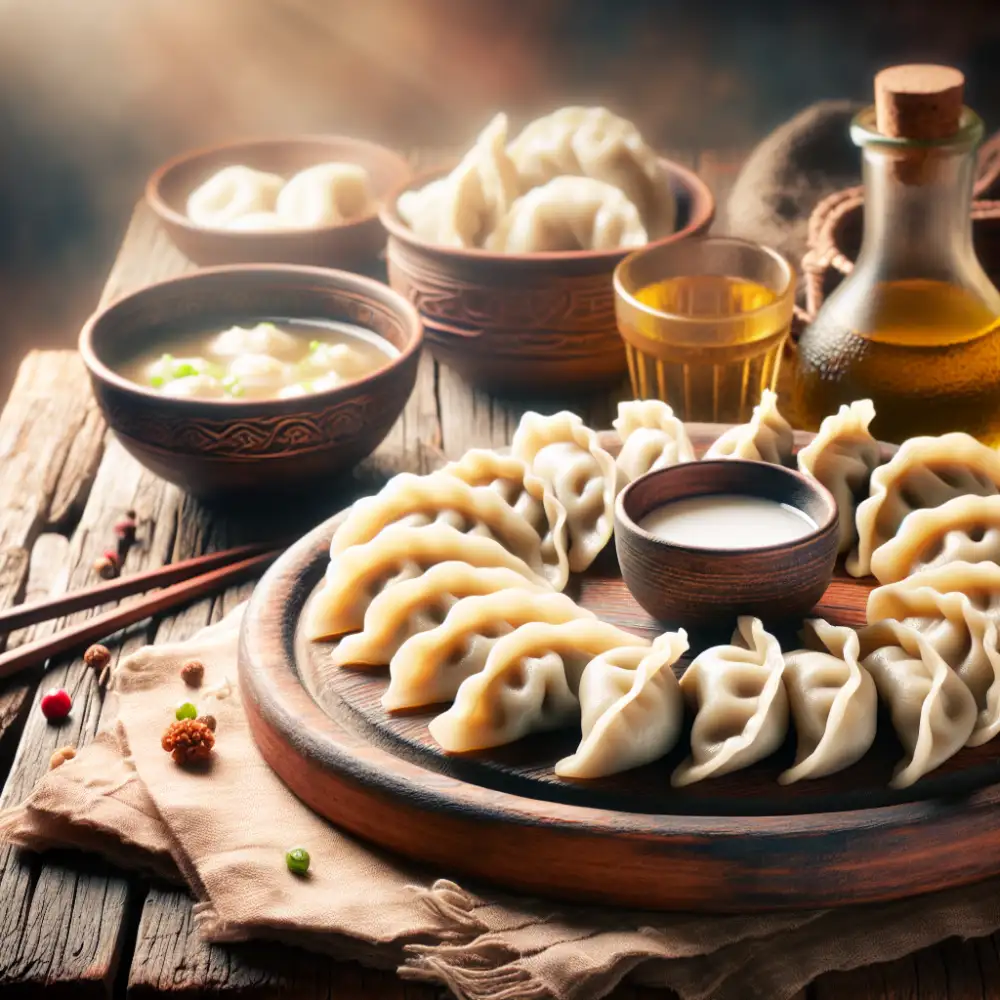
8. Use quality ingredients: Choose fresh ingredients for both the filling and wrappers to enhance flavor and texture. Fresh vegetables, meats, herbs, and spices will make a noticeable difference in taste.
9. Experiment with flavors: While traditional fillings are delicious, don't be afraid to get creative with your own combinations of ingredients and seasonings to personalize your dumplings.
10. Practice makes perfect: Making perfect dumplings takes practice. Don't get discouraged if your first attempts are not flawless. With time and experience, you will master the art of making delicious dumplings.
By following these tips and tricks, you can elevate your dumpling-making skills and enjoy perfectly cooked, flavorful dumplings every time.
In conclusion, dumplings truly offer a delightful culinary adventure for food lovers. With their rich history and cultural significance, they have become a beloved dish around the world. Whether it's the Chinese jiaozi, Italian ravioli, or Polish pierogi, each type of dumpling brings its own unique flavors and textures to the table.
The ingredients and preparation methods may vary, but the essence remains the same - a delicious filling encased in a soft dough. From steaming and boiling to frying and baking, there are various cooking techniques that can be used to create perfectly cooked dumplings.
Serving dumplings with an array of dips and sauces enhances their flavor profile. Whether it's soy sauce, vinegar, chili oil, or sour cream, these accompaniments add an extra layer of taste to every bite.
Not only are dumplings a treat for the taste buds, but they also offer health benefits. Packed with protein from meat or vegetables, they provide essential nutrients. Additionally, steamed or boiled dumplings are lower in fat compared to fried ones.
The world of dumplings is constantly evolving with new variations and innovative recipes emerging. Chefs experiment with different fillings like seafood, cheese, or even dessert options like fruit-filled dumplings. This ensures that there is always something new to explore in the realm of dumpling cuisine.
To make perfect dumplings at home, remember to keep your dough pliable and your fillings well-seasoned. Practice makes perfect when it comes to folding techniques so don't be discouraged if your first attempts aren't flawless.
In conclusion, whether you're enjoying traditional classics or trying out modern twists on this beloved dish, exploring the world of dumplings is a delightful journey that will satisfy both your taste buds and curiosity for different cultures. So go ahead and indulge in these delectable treats - you won't be disappointed!
Published: 10. 02. 2024
Category: Food


